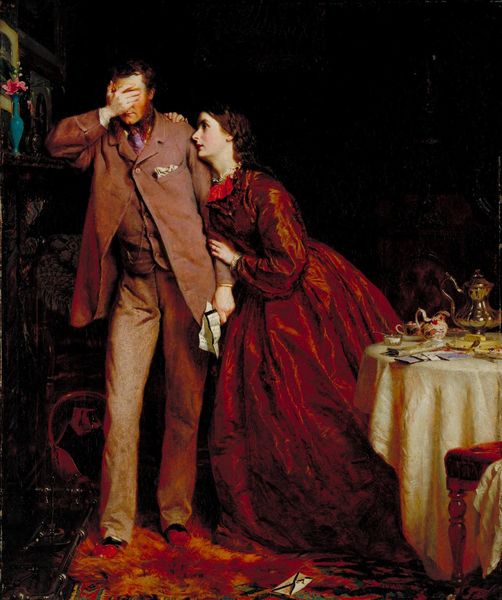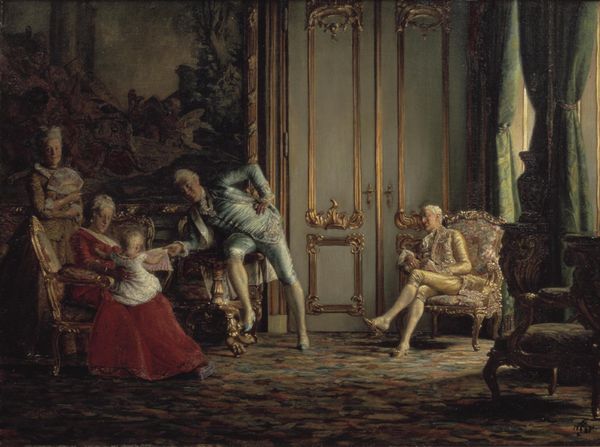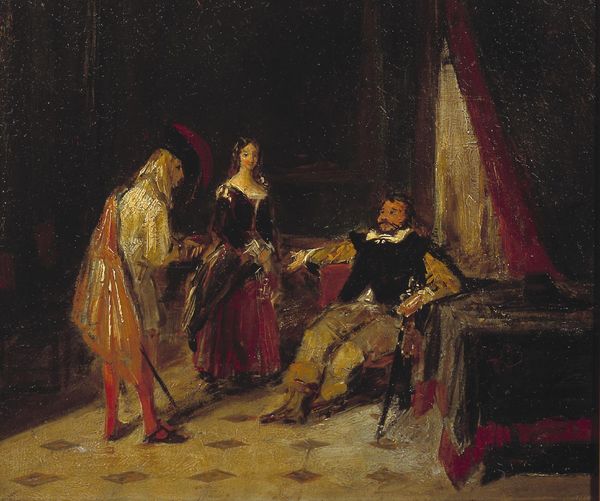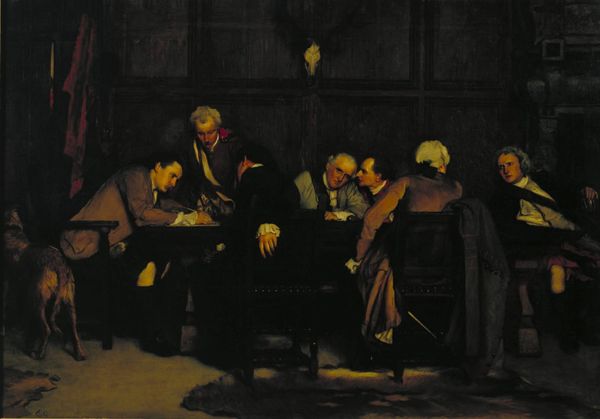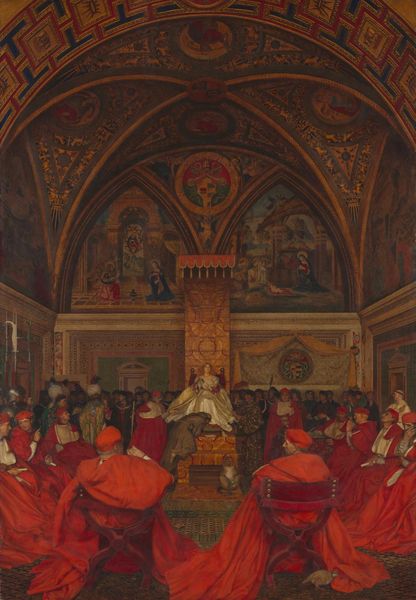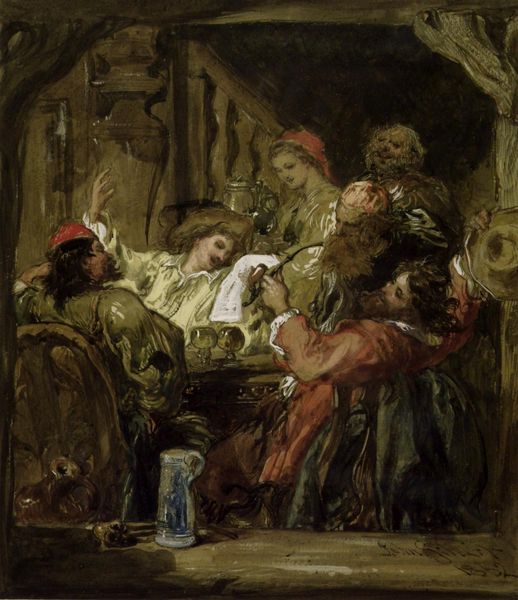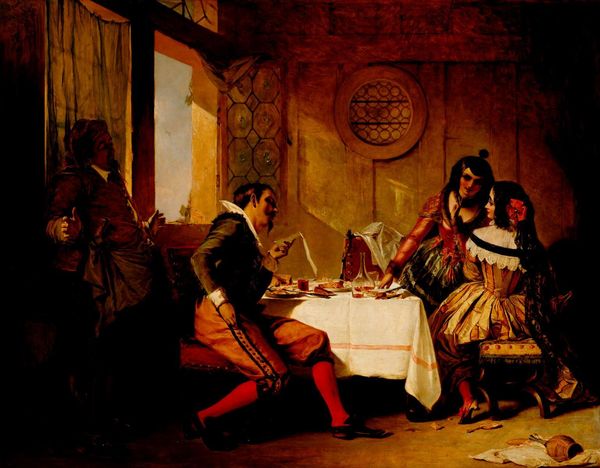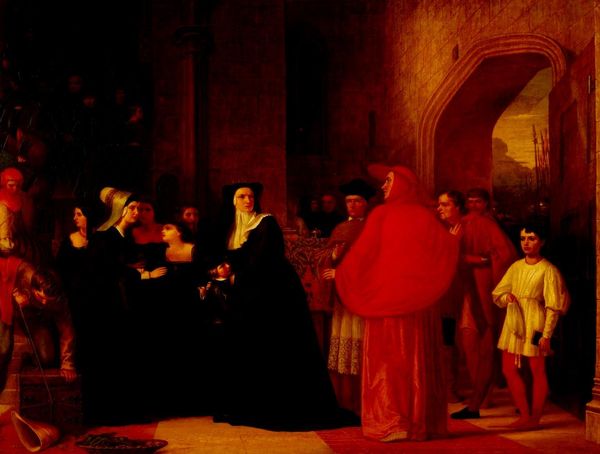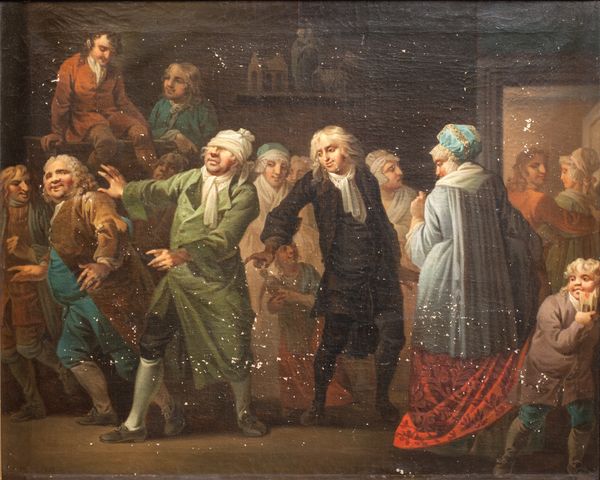
painting, oil-paint
#
portrait
#
figurative
#
painting
#
oil-paint
#
genre-painting
Copyright: Public Domain: Artvee
Curator: Stepping into Jehan Georges Vibert’s c. 1890 painting, "The Marvelous Sauce," we find ourselves in the midst of what seems to be a very important culinary deliberation. What is your first take on this scene? Editor: Well, it's visually quite arresting. The vivid reds and greens are striking against the aged kitchen setting. There's a kind of visual tension created by the diagonal positioning of the two figures, a cleric and a chef. It definitely has a staged feel to it. Curator: Precisely! Vibert often painted satirical genre scenes featuring clergymen. Here, we see the Cardinal in bright scarlet robes, presumably inspecting the work of the young chef. Note how this rich vermilion might signify not only his rank but also passions linked with the ritualized practices of the Church. What do you think of his posture? Editor: There’s definitely something going on with his exaggerated stance and intense expression. His posture amplifies the power dynamic. The way his raised hand mirrors the curve of the overhanging extractor hood creates visual echoes within the pictorial space. Curator: Indeed. And observe the symbolism of the spoon that the chef holds – perhaps connoting preparation or apprenticeship. Beyond their immediate interaction, consider also the abundance of copper pans. It might speak to ritual and ceremony – a shared aspect of both the Church and haute cuisine. Editor: Looking closely, it strikes me how the rigid composition contrasts with the implied dynamism of cooking. Those glazes vibrate within such a constrained space, almost bursting free of its rigid form. Curator: I think the artist uses this painting as a broader commentary on societal power structures, specifically questioning institutional influence and its subtle intrusions on everyday endeavors. Even culinary endeavors were not immune to such hierarchical arrangements. Editor: So beyond surface observations, it is asking about authority. With Vibert layering semiotic content so consciously, you could spend hours here interpreting its cultural intent. Curator: Absolutely! We begin by seeing a chef and a cardinal, but end up exploring timeless ideas around labor, luxury, and control. It offers a potent cultural and psychological inquiry that extends well beyond this antique kitchen. Editor: Thanks! These historical glimpses, analyzed through a formalist approach, illuminate much deeper truths within our human condition.
Comments
No comments
Be the first to comment and join the conversation on the ultimate creative platform.


